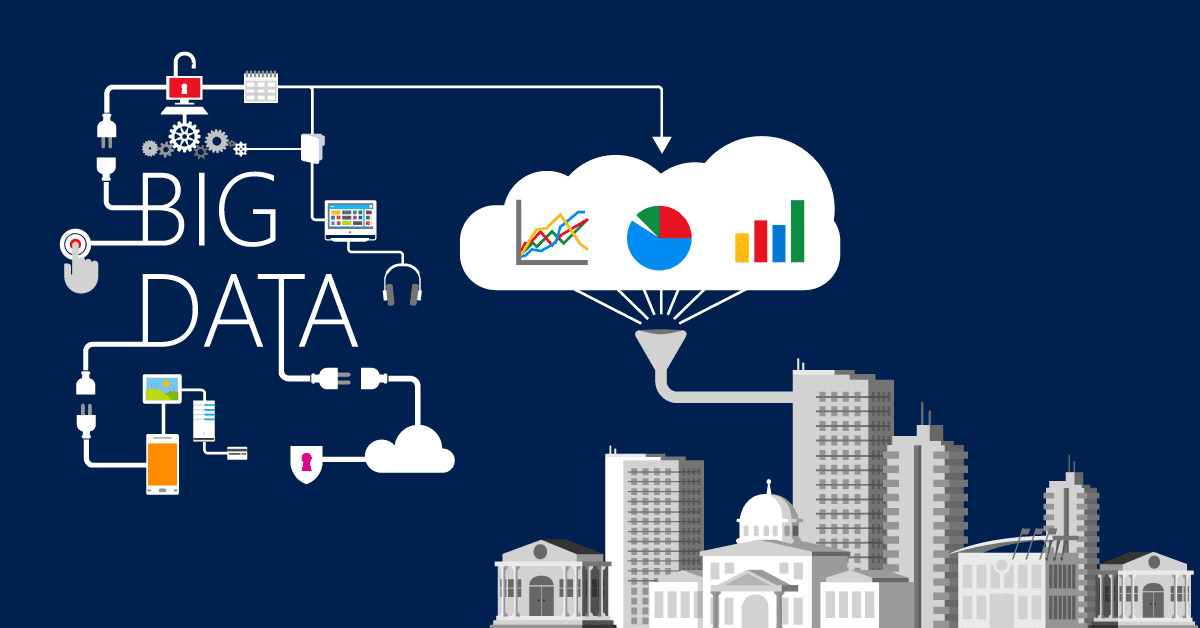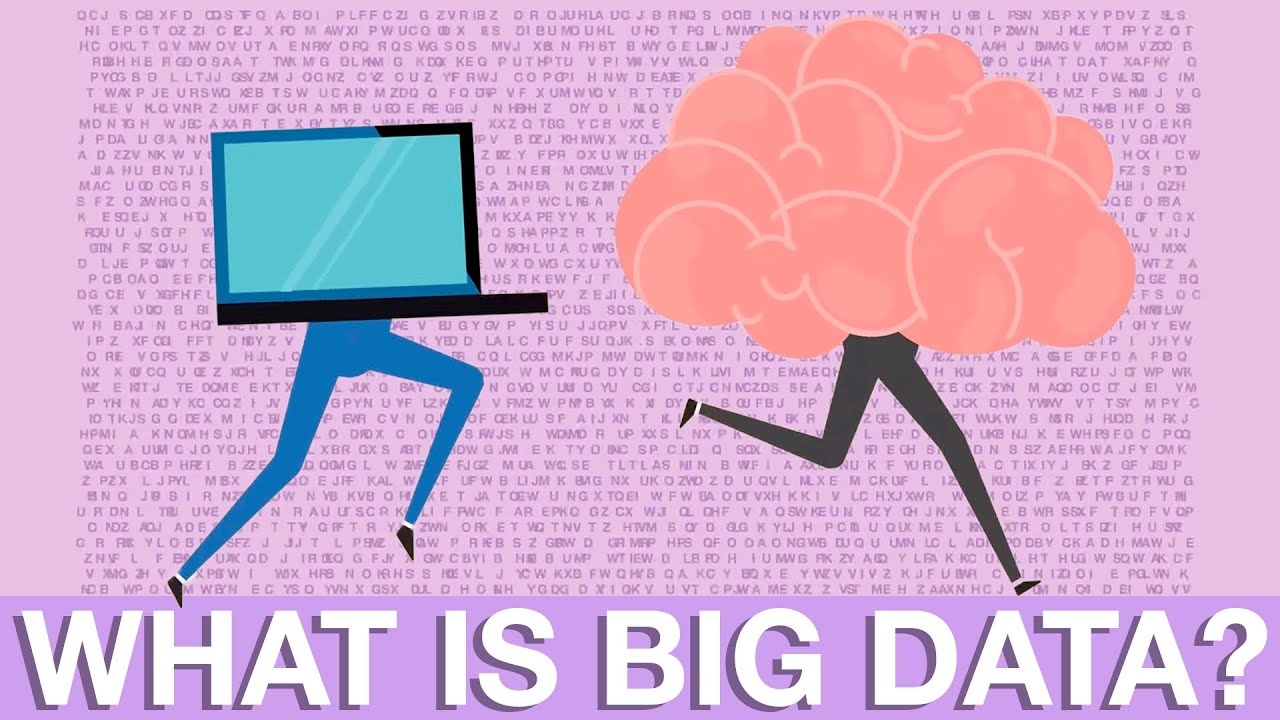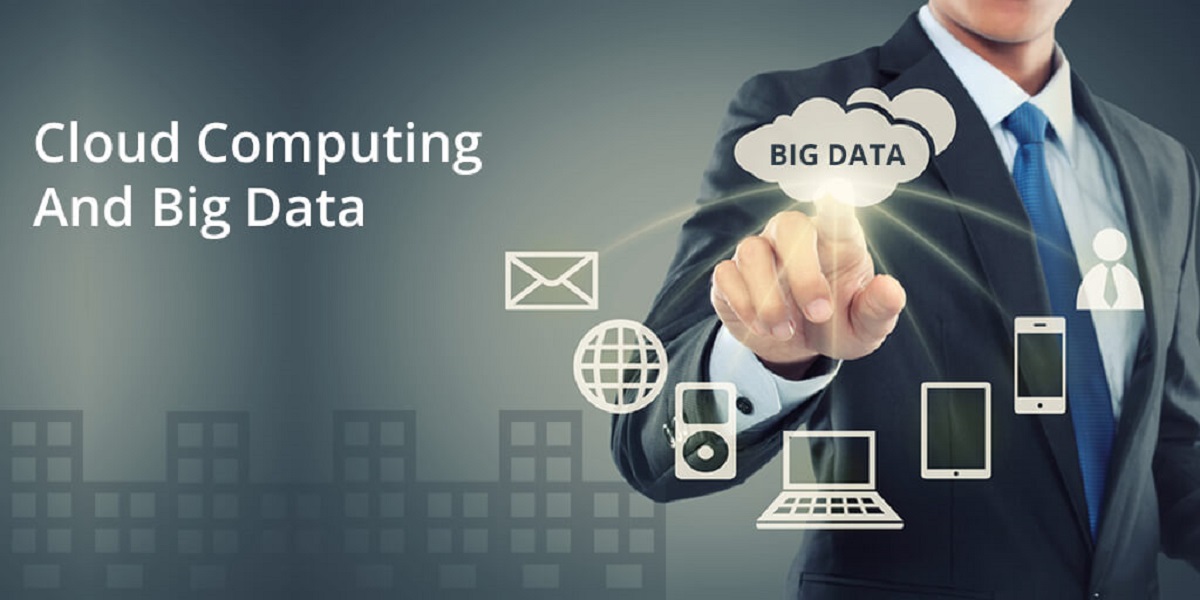Introduction
Governments today face an overwhelming amount of data from various sources such as citizens, businesses, and public agencies. This data, known as big data, presents both opportunities and challenges for governments in harnessing its potential for better governance. Big data refers to the vast amount of structured and unstructured data generated and collected in real-time, often characterized by its volume, velocity, and variety. It encompasses data from traditional sources such as administrative records and surveys, as well as new sources like social media, sensors, and internet of things (IoT) devices.
The use of big data in governance has gained significant attention in recent years due to its potential to inform decision-making, optimize resource allocation, and improve public service delivery. Governments are increasingly leveraging big data analytics to gain insights, identify patterns, and make data-driven policies to address complex societal challenges. This article explores the various ways in which governments utilize big data and the benefits it brings, along with the challenges and concerns associated with its use.
The importance of big data for governments lies in its ability to provide a comprehensive and real-time picture of the state of society and its various components. By analyzing large and diverse datasets, governments can gain insights into citizen behavior, social trends, economic patterns, and environmental factors. This information enables more informed and evidence-based policymaking, helping governments to develop effective strategies and interventions.
Furthermore, big data analytics can enhance public service delivery by enabling governments to anticipate needs, optimize resource allocation, and tailor services to specific user segments. It allows for proactive planning and intervention, leading to improved outcomes in areas such as healthcare, transportation, education, and social welfare. Governments can also leverage big data to enhance law enforcement and national security efforts, detect fraudulent activities, and ensure tax compliance.
However, the utilization of big data in governance is not without challenges. Governments must address concerns related to data privacy, security, and ethical considerations. The collection, storage, and analysis of large volumes of data raise questions about privacy infringement and the potential misuse of personal information. Governments need to develop robust data protection regulations and frameworks to ensure the responsible and ethical use of big data.
In the following sections, we will delve into the specific examples of how governments employ big data in various domains, such as policy making, public service delivery, law enforcement, revenue collection, and disaster management. These examples will illustrate the practical applications and the immense potential of big data in shaping a more efficient, effective, and responsive governance system.
Definition of Big Data
The term “big data” refers to large and complex datasets that cannot be effectively managed or analyzed using traditional data management and processing methods. It is characterized by three main attributes: volume, velocity, and variety.
Volume refers to the sheer scale of the data being generated. With the advent of digital technologies, the amount of data being generated is growing exponentially. This includes structured data from databases, as well as unstructured data from sources like social media, sensors, and log files.
Velocity refers to the speed at which data is being generated and must be processed. Real-time data streams from sources like IoT devices, mobile apps, and social media platforms require rapid processing and analysis to extract useful insights and drive timely decision-making.
Variety refers to the diversity of data formats and sources. Big data encompasses structured data, such as spreadsheets and databases, as well as unstructured data, including text documents, images, videos, and audio files. Various sources, such as social media, transaction records, and sensor data, contribute to the variety of data.
Additionally, big data often exhibits the characteristics of veracity and value. Veracity refers to the quality and reliability of the data, as big data can contain errors, inconsistencies, and biases. Value refers to the potential insights and value that can be extracted from analyzing the data, which can help improve decision-making and drive innovation.
Big data is not just about the sheer size of the dataset but also the ability to analyze and derive actionable insights from it. Traditional data processing tools and techniques are ill-equipped to handle big data due to its volume, velocity, and variety. As a result, specialized technologies and approaches, such as distributed computing, parallel processing, and machine learning algorithms, are employed to manage and extract value from big data.
In summary, big data refers to large, complex, and diverse datasets that require advanced tools and techniques to collect, store, process, and analyze. Its volume, velocity, and variety pose both challenges and opportunities for governments to leverage this wealth of information and derive meaningful insights for better governance.
Importance of Big Data for Governments
Big data holds immense importance for governments in the digital age, providing them with invaluable insights to tackle complex challenges, make data-driven decisions, and effectively serve their citizens. Here are some key reasons why big data is crucial for governments:
1. Enhanced Decision-Making: Big data analytics enables governments to gain comprehensive and real-time insights into various aspects of society. By analyzing large and diverse datasets, governments can make informed decisions based on evidence and data rather than relying solely on intuition or limited information. This helps in formulating effective policies, allocating resources efficiently, and addressing emerging issues promptly.
2. Improved Public Service Delivery: Big data plays a vital role in improving the delivery of public services. By analyzing vast amounts of data, governments can identify patterns and trends, allowing them to understand citizens’ needs and preferences. This enables the development of personalized and targeted services, resulting in improved outcomes in areas such as healthcare, education, transportation, and social welfare.
3. Proactive Problem Solving: Big data analytics helps governments move from a reactive to a proactive approach in problem-solving. By leveraging real-time data streams and predictive modeling, governments can identify potential issues before they escalate and take preventive measures. For example, analyzing data related to crime patterns can help law enforcement agencies allocate resources strategically and improve public safety.
4. Cost Savings: Big data enables governments to optimize resource allocation and reduce costs. Analyzing data can highlight inefficiencies, identify areas of waste, and improve the effectiveness of government programs. For instance, analyzing transportation data can help optimize routes and schedules, resulting in fuel savings and reduced carbon emissions.
5. Evidence-based Policies: Big data provides governments with the evidence needed to create and implement effective policies. By analyzing large and diverse datasets, policymakers can gain a comprehensive understanding of the impact and effectiveness of existing policies. This helps in identifying areas for improvement and formulating data-driven policies that address the specific needs and challenges of society.
6. Better Resource Management: Big data analytics can assist governments in managing scarce resources more efficiently. By monitoring and analyzing data related to infrastructure, energy usage, and environmental factors, governments can make informed decisions about resource allocation, sustainability, and disaster preparedness. This ensures the optimal use of resources and enhances long-term planning.
In summary, big data holds great importance for governments in modern governance. It enables evidence-based decision-making, enhances public service delivery, facilitates proactive problem-solving, promotes cost savings, fosters the development of data-driven policies, and optimizes resource management. By harnessing the power of big data, governments can create more efficient, effective, and responsive governance systems that cater to the evolving needs of their citizens.
Benefits of Using Big Data in Governance
The use of big data in governance brings a plethora of benefits, revolutionizing how governments operate, deliver services, and interact with citizens. Here are some key advantages of using big data in governance:
1. Enhanced Policy Insights: Big data analytics enables governments to gain deep insights into societal trends, patterns, and behaviors. By analyzing large and diverse datasets, governments can make more informed decisions when formulating policies. This leads to policies that are better aligned with the needs and aspirations of citizens, resulting in improved outcomes and greater public satisfaction.
2. Improved Efficiency: Big data analytics can streamline government operations and improve efficiency. By leveraging data, governments can identify bottlenecks, remove redundancies, and optimize processes. This reduces administrative burdens, saves time, and increases productivity, allowing governments to focus on delivering timely and effective services to citizens.
3. Personalized Service Delivery: Big data enables governments to provide personalized services tailored to the specific needs and preferences of citizens. By analyzing data on individual behaviors, demographics, and preferences, governments can offer customized solutions and targeted interventions. This leads to improved citizen satisfaction and better outcomes in sectors such as healthcare, education, and social welfare.
4. Predictive Analysis: Big data analytics allows governments to predict and anticipate future trends and events. By analyzing historical and real-time data, governments can make informed predictions and plan accordingly. This enables proactive decision-making and timely interventions, particularly in areas such as disaster management, public safety, and resource allocation.
5. Evidence-based Decision Making: Big data provides governments with a wealth of evidence to support decision-making processes. By analyzing data, governments can base decisions on objective and verifiable information rather than assumptions or limited data. This leads to more rational, effective, and data-driven decision making, with better outcomes for governments and citizens alike.
6. Transparency and Accountability: Big data allows governments to increase transparency and accountability in their operations. By collecting and analyzing data related to government activities, spending, and outcomes, governments can provide citizens with real-time access to information. This fosters trust, promotes transparency, and helps hold governments accountable to their citizens.
7. Data-Driven Monitoring and Evaluation: Big data enables governments to measure and evaluate the impact and effectiveness of policies and programs in real-time. By continuously monitoring and analyzing data, governments can identify areas for improvement, address emerging issues, and adjust policies accordingly. This results in more effective service delivery, cost savings, and improved outcomes for citizens.
In summary, the use of big data in governance offers numerous benefits, including enhanced policy insights, improved efficiency, personalized service delivery, predictive analysis, evidence-based decision making, enhanced transparency and accountability, and data-driven monitoring and evaluation. By harnessing the power of big data, governments can transform their operations, improve service delivery, and create more responsive and citizen-centric governance systems.
Challenges Governments Face in Using Big Data
While the utilization of big data offers immense potential for governments, it also brings along several challenges that need to be addressed. Here are some of the key challenges governments face in using big data:
1. Data Quality and Integrity: Governments often encounter challenges related to data quality and integrity. With the vast amount of data available, ensuring the accuracy, completeness, and reliability of the data becomes crucial. Inaccurate or incomplete data can lead to flawed analysis and incorrect decision making. Governments need to establish robust data quality standards and frameworks to address these challenges.
2. Data Privacy and Security: Governments must navigate the complex landscape of data privacy and security when dealing with big data. With large volumes of personal and sensitive information being collected and stored, governments need to ensure the privacy and protection of citizens’ data. Adequate security measures, such as encryption and access controls, are essential to safeguard against data breaches and unauthorized access.
3. Skills and Expertise: Big data analytics requires specialized skills and expertise. Governments need data scientists and analysts who are proficient in handling big data, utilizing advanced analytics techniques, and interpreting the insights generated. The shortage of skilled professionals poses a challenge for governments in effectively utilizing big data and deriving valuable insights.
4. Data Integration: Governments collect data from various sources and agencies, making data integration a challenge. Data from different systems may be in different formats or stored in silos, making it difficult to combine and analyze the data effectively. Governments need robust data integration strategies and mechanisms to ensure data interoperability and comprehensive analysis.
5. Ethical Considerations: The use of big data raises ethical considerations for governments. Governments must ensure that the collection, use, and analysis of data are conducted ethically and in compliance with relevant laws and regulations. Issues of privacy infringement, algorithmic bias, and potential misuse of data need to be carefully addressed to maintain public trust and confidence.
6. Data Governance and Management: Effectively managing and governing big data can be a challenge for governments. This includes establishing data governance frameworks, data sharing protocols, data storage, and retrieval policies, as well as ensuring data quality, access, and security. Governments need to adopt robust data management practices and invest in appropriate infrastructure and technologies.
7. Cost and Resource Allocation: Leveraging big data requires significant investments in technology infrastructure, data storage, analytics tools, and skilled human resources. Governments need to allocate adequate resources and budgets to support the acquisition, maintenance, and utilization of big data. Budget constraints and competing priorities pose challenges in this regard.
In summary, governments face various challenges in effectively using big data, including data quality and integrity, data privacy and security, skills and expertise, data integration, ethical considerations, data governance and management, and cost and resource allocation. Addressing these challenges is crucial to ensure the responsible and beneficial use of big data in governance.
Examples of How Governments Use Big Data
Governments across the world are leveraging big data in various domains to improve governance, enhance public service delivery, and make data-driven decisions. Here are some examples of how governments use big data:
1. Big Data in Policy Making: Governments utilize big data analytics to inform policy-making processes. By analyzing large datasets, governments can identify societal trends, evaluate the effectiveness of existing policies, and predict potential outcomes of proposed policies. This enables evidence-based decision-making and helps governments formulate policies that address the specific needs and challenges of their citizens effectively.
2. Big Data in Public Service Delivery: Big data is used to optimize and improve the delivery of public services. Governments analyze data to understand citizens’ needs, preferences, and usage patterns to tailor services accordingly. For example, healthcare systems analyze patient data to identify disease patterns and allocate resources efficiently. Transportation agencies leverage data from sensors and mobile applications to optimize routes, manage traffic, and improve commuting experiences.
3. Big Data in Law Enforcement and National Security: Governments utilize big data analytics in law enforcement and national security efforts. Police departments analyze various data sources, including crime data, social media feeds, and surveillance footage, to detect patterns, prevent crime, and allocate resources effectively. Intelligence agencies analyze large datasets to identify potential threats, manage risks, and respond to emergencies promptly.
4. Big Data in Revenue Collection and Tax Compliance: Governments use big data analytics to enhance revenue collection and improve tax compliance. Tax authorities analyze vast amounts of financial data to detect fraudulent activities, identify tax evaders, and ensure compliance. By leveraging big data, governments can target enforcement actions, streamline auditing processes, and reduce tax evasion, leading to increased revenue generation.
5. Big Data in Disaster Management and Emergency Response: Big data plays a crucial role in disaster management and emergency response. Governments analyze real-time data from various sources such as sensors, social media, and satellite imagery to monitor potential risks, predict disaster patterns, and coordinate response efforts. This facilitates timely and effective interventions, helping to mitigate the impact of natural disasters and protect citizens.
These examples illustrate just a few ways in which governments harness the power of big data to improve governance and better serve their citizens. By leveraging big data analytics, governments can gain insights, optimize resource allocation, enhance decision-making processes, and deliver more efficient and effective services. As technology continues to advance and data sources expand, the potential for governments to utilize big data will only continue to grow.
Big Data in Policy Making
Big data analytics has revolutionized the way governments approach policy making. By analyzing large and diverse datasets, governments can gain valuable insights that inform evidence-based decision making and lead to more effective policies. Here are some examples of how big data is used in policy making:
1. Identifying Social Trends: Big data allows governments to identify and understand emerging social trends in real-time. Through analysis of social media posts, online forums, and public sentiment analysis, governments can monitor public opinions, concerns, and preferences. This information helps policymakers identify societal issues and develop policies that address them proactively.
2. Predictive Modeling: Big data enables governments to predict future scenarios and assess the potential impact of policies. By analyzing historical and real-time data, governments can develop predictive models that simulate policy outcomes and evaluate their effects before implementation. This helps policymakers make informed decisions, anticipate consequences, and adjust policies accordingly to achieve desired objectives.
3. Evidence-based Decision Making: Big data provides governments with a wealth of evidence to support policy-making processes. By analyzing large datasets, governments can identify trends, patterns, and correlations that influence policy outcomes. This evidence-based approach helps policymakers assess the effectiveness of existing policies, identify gaps, and design new policies based on reliable data, improving the likelihood of success.
4. Targeted Interventions: Big data enables governments to implement targeted interventions by identifying specific segments of the population or geographic areas that require attention. By analyzing data on demographics, social determinants of health, and economic indicators, governments can tailor policies and interventions to address the unique needs and challenges of different communities. This ensures that resources are allocated where they are most needed.
5. Improving Service Delivery: Big data analytics helps governments optimize public service delivery. By analyzing data on service usage patterns, wait times, and customer feedback, governments can identify areas where service delivery can be improved. These insights allow policymakers to identify bottlenecks, allocate resources efficiently, and enhance the quality and accessibility of public services.
6. Early Warning Systems: Big data plays a crucial role in creating early warning systems for potential crises and emergencies. Governments can monitor data from various sources, including sensors, surveillance systems, and social media, to detect early indicators of potential issues. This allows policymakers to take preemptive actions, implement preventive measures, and minimize the impact on society.
By leveraging big data in policy making, governments can make informed decisions, understand the pulse of society, and design policies that address the specific needs and challenges of their citizens. The integration of big data analytics into the policy-making process empowers governments to drive effective and evidence-based policies that have a positive impact on society.
Big Data in Public Service Delivery
The utilization of big data in public service delivery has transformed the way governments interact with citizens and deliver essential services. By harnessing the power of big data analytics, governments can optimize resource allocation, improve service quality, and tailor services to meet the specific needs of citizens. Here are some examples of how big data is used in public service delivery:
1. Personalized Service Delivery: Big data analytics allows governments to deliver personalized services tailored to individual citizens. By analyzing data on demographics, preferences, and behaviors, governments can understand the unique needs and requirements of citizens. This enables the customization of services, ensuring that each citizen receives the most relevant and effective support.
2. Anticipating Citizen Needs: Big data enables governments to proactively anticipate and meet citizen needs. By analyzing data on usage patterns, complaints, and feedback, governments can identify patterns and predict future demands. This allows for proactive planning and resource allocation, ensuring that services are available when and where they are needed most.
3. Optimal Resource Allocation: Big data analytics helps governments optimize the allocation of resources in public service delivery. By analyzing data on service utilization, demographics, and demand patterns, governments can allocate resources efficiently and effectively. This ensures that resources are directed to areas with the highest need, resulting in improved service availability and reduced waiting times.
4. Service Quality Improvement: Big data analytics enables governments to monitor and improve service quality. By analyzing data on service usage, performance metrics, and customer feedback, governments can identify areas for improvement and take corrective measures. This leads to enhanced service delivery, increased citizen satisfaction, and improved outcomes.
5. Predictive Maintenance: Big data analytics allows governments to implement predictive maintenance strategies in public infrastructure and facilities. By analyzing data from sensors and monitoring systems, governments can predict when equipment or infrastructure is likely to fail or require maintenance. This enables proactive measures to be taken, reducing downtime, minimizing disruptions, and ensuring the smooth functioning of essential services.
6. Real-time Data Monitoring: Big data analytics enables governments to monitor real-time data to identify emerging issues and respond promptly. For instance, governments can analyze data from social media, citizen reports, and other sources to detect public safety concerns, health emergencies, or environmental hazards. This facilitates rapid response and effective crisis management.
By harnessing big data in public service delivery, governments can enhance citizen satisfaction, optimize resource allocation, and improve the overall quality and efficiency of public services. The use of big data analytics enables governments to deliver more personalized, timely, and effective services that address the evolving needs and expectations of their citizens.
Big Data in Law Enforcement and National Security
The utilization of big data in law enforcement and national security has transformed the way governments tackle crime, maintain public safety, and address security challenges. By leveraging the power of big data analytics, governments can detect patterns, identify threats, and respond effectively to ensure the safety and security of their citizens. Here are some examples of how big data is used in law enforcement and national security:
1. Crime Pattern Analysis: Big data analytics enables law enforcement agencies to analyze large datasets to identify crime patterns and trends. By integrating data from various sources such as crime reports, CCTV footage, social media, and call records, governments can detect patterns of criminal activity and allocate resources strategically. This enables proactive measures to prevent crime, enhance public safety, and allocate law enforcement resources more effectively.
2. Predictive Policing: Big data analytics helps law enforcement agencies predict and prevent crimes before they occur. By analyzing historical crime data, demographics, weather patterns, and other relevant factors, governments can identify areas and timeframes that are more prone to criminal activity. This enables law enforcement agencies to deploy resources proactively, deter potential criminals, and prevent crime.
3. Cybersecurity: Big data analytics plays a crucial role in cybersecurity efforts. Governments analyze large volumes of data related to network traffic, system logs, and user behavior to identify potential cybersecurity threats and vulnerabilities. By detecting anomalies and patterns indicative of cyberattacks, governments can take timely measures to mitigate risks and protect critical infrastructure and sensitive information.
4. Intelligence Analysis: Big data analytics helps intelligence agencies process and analyze vast amounts of data from various sources to identify potential threats to national security. By integrating data from surveillance systems, social media, financial records, and other channels, governments can gain insights into potential terrorist activities, money laundering, or cyber espionage. This aids in the gathering of intelligence, facilitating proactive measures to counter threats.
5. Border Security and Immigration: Big data analytics aids in managing border security and immigration processes. Governments analyze data from passports, travel records, and biometric identification systems to identify individuals who may pose a security risk or have violated immigration laws. This helps enforce border controls, screen individuals, and maintain national security.
6. Emergency Response and Disaster Management: Big data analytics helps governments respond effectively to emergencies and manage disasters. By analyzing real-time data from various sources such as sensors, social media, and satellite imagery, governments can detect and monitor crises in real-time. This enables timely resource allocation, efficient rescue operations, and effective coordination during disaster management and emergency response.
By harnessing big data in law enforcement and national security, governments can detect patterns, anticipate threats, act proactively, and ensure the safety and security of their citizens. The use of big data analytics strengthens law enforcement efforts, aids in intelligence gathering, enhances border security, and improves emergency response capabilities, making societies safer and more secure.
Big Data in Revenue Collection and Tax Compliance
The utilization of big data in revenue collection and tax compliance has revolutionized how governments manage financial resources, detect tax evasion, and ensure compliance. By harnessing the power of big data analytics, governments can analyze vast amounts of financial information to optimize revenue collection and enhance tax compliance. Here are some examples of how big data is used in revenue collection and tax compliance:
1. Detection of Tax Evasion: Big data analytics enables governments to detect and prevent tax evasion effectively. By analyzing extensive financial records, transactions, and other relevant data sources, governments can identify anomalies, patterns, and red flags indicative of potential tax evasion. This facilitates proactive measures, ensuring that individuals and businesses pay their fair share of taxes.
2. Risk Assessment: Big data analytics helps governments assess the risk of tax non-compliance. By analyzing various data sources such as income statements, financial transactions, and industry trends, governments can identify individuals or businesses that are more likely to engage in non-compliant activities. This allows for targeted enforcement actions and resource allocation to mitigate tax evasion risks.
3. Fraud Detection: Big data analytics aids in detecting fraudulent activities related to revenue collection and tax compliance. Governments analyze data from multiple sources, such as financial records, third-party information, and social media, to identify fraudulent schemes or dubious financial practices. This enables early detection of fraud, preventing revenue loss and maintaining the integrity of the tax system.
4. Compliance Monitoring: Big data analytics helps governments monitor and enforce tax compliance more effectively. By analyzing data on tax filings, payment records, and financial transactions, governments can assess compliance levels and identify areas of non-compliance. This enables targeted interventions, such as conducting audits and investigations, to ensure adherence to tax regulations and promote fairness in the tax system.
5. Tax Gap Analysis: Big data analytics assists governments in conducting tax gap analysis. By comparing actual tax revenues with potential tax liabilities, governments can estimate the extent of tax evasion and non-compliance. This analysis provides insights into areas where compliance efforts need to be strengthened and helps governments develop strategies to close the tax gap.
6. Resource Allocation: Big data analytics allows governments to allocate resources efficiently for revenue collection and tax compliance purposes. By analyzing data on tax filing trends, risk factors, and compliance patterns, governments can prioritize enforcement activities and allocate resources where they are most needed. This ensures cost-effective enforcement efforts and maximizes revenue collection.
By leveraging big data in revenue collection and tax compliance, governments can detect tax evasion, assess compliance risks, prevent fraud, monitor compliance levels, conduct tax gap analysis, and optimize resource allocation. The use of big data analytics helps governments ensure a fair and transparent tax system, promote equality among taxpayers, and maximize revenue collection for public services and government initiatives.
Big Data in Disaster Management and Emergency Response
The utilization of big data in disaster management and emergency response has transformed how governments anticipate, prepare for, and respond to natural disasters and crises. Big data analytics allows governments to analyze real-time data from various sources, enabling timely and effective decision-making during emergencies. Here are some examples of how big data is used in disaster management and emergency response:
1. Early Warning Systems: Big data analytics plays a crucial role in creating early warning systems for natural disasters. Governments analyze data from sensors, weather stations, satellite imagery, and other relevant sources to detect and predict the occurrence of hazards such as hurricanes, earthquakes, floods, or wildfires. This enables governments to issue timely alerts, evacuate affected areas, and minimize the impact on human lives and property.
2. Situational Awareness: Big data analytics aids in developing situational awareness during disasters and crises. Governments analyze real-time data from social media, emergency calls, surveillance cameras, and crowdsourced information to monitor the situation on the ground. This helps in understanding the evolving circumstances, identifying areas in need of immediate assistance, and directing resources accordingly.
3. Resource Allocation: Big data analytics facilitates efficient resource allocation during emergency response. Governments analyze data on infrastructure, population density, and critical facilities to determine the optimal distribution of resources such as medical supplies, food, water, and rescue teams. This ensures that resources are allocated where they are most needed, maximizing their impact and saving lives.
4. Evacuation Planning: Big data analytics assists governments in planning and executing evacuations during emergencies. By analyzing population density, transportation data, and hazard predictions, governments can develop evacuation plans that prioritize high-risk areas and efficiently move people to safety. This enables a coordinated and organized evacuation process, reducing congestion and ensuring the well-being of affected populations.
5. Damage Assessment and Recovery: Big data analytics helps governments assess the extent of damage caused by disasters and plan for recovery efforts. By analyzing satellite imagery, sensor data, and other sources, governments can quickly assess the impact on infrastructure, buildings, and natural resources. This data guides the allocation of recovery resources, aids in reconstruction planning, and facilitates the return to normalcy.
6. Social Media Analysis: Big data analytics leverages social media data to gather real-time information and public sentiment during emergencies. Governments monitor social media platforms to gather information on the affected areas, identify urgent needs, and address public concerns. This allows governments to communicate vital information to the public, dispel rumors, and engage with affected communities.
By utilizing big data in disaster management and emergency response, governments can enhance their ability to anticipate, prepare for, and respond to emergencies. The use of big data analytics enables governments to develop early warning systems, maintain situational awareness, allocate resources efficiently, plan evacuations, assess damage, and engage with affected communities, ultimately minimizing the impact of disasters and saving lives.
Big Data and Privacy Concerns
The utilization of big data raises significant privacy concerns, as governments collect and analyze vast amounts of personal data from various sources. While big data holds immense potential for improving governance and delivering better services, it is crucial to address these privacy concerns to ensure the responsible and ethical use of data. Here are some key privacy concerns associated with big data:
1. Data Security: Big data analytics requires the collection and storage of large volumes of personal and sensitive data. Governments must implement robust security measures to protect this data from unauthorized access, hacking, and data breaches. Strengthening cybersecurity frameworks and adopting encryption techniques are essential steps in safeguarding data security.
2. Anonymization and De-identification: To protect individuals’ privacy, governments should employ techniques such as anonymization and de-identification when handling big data. This involves removing or encrypting personally identifiable information (PII) from the datasets, making it difficult to link the data back to individuals. It is important to ensure that anonymized data cannot be re-identified through other means.
3. Informed Consent: Governments should obtain informed consent from individuals before collecting and using their personal data for big data analytics. Individuals should have the right to know how their data will be used, to whom it will be shared, and for what purposes. Transparency and clarity in obtaining consent help establish trust between governments and citizens, ensuring that data usage is aligned with privacy expectations.
4. Privacy by Design: Governments should adopt a privacy by design approach when implementing big data initiatives. This means integrating privacy considerations into the design and development of systems and policies from the outset. Embedding privacy as a core principle ensures that privacy safeguards are implemented throughout the entire data lifecycle, minimizing the risk of privacy breaches.
5. Data Governance and Accountability: Governments must establish robust data governance frameworks to ensure the responsible use of big data. This includes defining clear roles and responsibilities, setting data access controls, and implementing policies and procedures to govern data handling, storage, and sharing. Implementing accountability mechanisms ensures that governments are held responsible for the protection of citizens’ privacy.
6. Algorithmic Bias and Discrimination: Big data analytics rely on algorithms to process and analyze data. Governments should be cautious about potential algorithmic biases that may result in discriminatory practices. Ongoing monitoring and evaluation of algorithms are necessary to ensure fairness and prevent unintended discrimination based on race, gender, age, or other protected attributes.
7. Cross-border Data Flow: As big data often includes international data flows, governments must consider data protection laws and regulations when transferring data across borders. Adherence to appropriate cross-border data transfer mechanisms, such as data protection agreements or standard contractual clauses, helps protect individuals’ privacy rights and ensures compliance with applicable data protection laws.
Addressing privacy concerns related to big data is crucial to maintain public trust and confidence. By implementing strong data security measures, emphasizing transparency and informed consent, adopting privacy by design principles, establishing robust data governance frameworks, addressing algorithmic bias, and being mindful of cross-border data transfer implications, governments can harness the full potential of big data while safeguarding individuals’ privacy rights.
Conclusion
The utilization of big data in governance represents a significant transformation in how governments operate and serve their citizens. By harnessing the power of big data analytics, governments can make evidence-based decisions, optimize resource allocation, improve service delivery, and enhance overall governance.
Throughout this article, we have explored the definition of big data and its importance for governments. We have highlighted the benefits of using big data in governance, including enhanced decision-making, improved public service delivery, proactive problem-solving, and cost savings.
However, we also acknowledge the challenges governments face in utilizing big data, such as data quality and integrity, privacy concerns, skills and expertise, data governance, and resource allocation. Addressing these challenges is crucial to ensure the responsible and ethical use of big data and maintain public trust.
We have examined specific examples of how governments employ big data in various domains, including policy-making, public service delivery, law enforcement, revenue collection, disaster management, and emergency response. These examples illustrate the practical applications and immense potential of big data in transforming governance systems.
Furthermore, we delved into the privacy concerns associated with big data and the importance of addressing these concerns to safeguard individuals’ privacy rights. Implementing strong data security measures, obtaining informed consent, focusing on privacy by design, establishing robust data governance frameworks, and addressing algorithmic bias are crucial steps governments can take to ensure responsible and ethical use of big data.
In conclusion, the utilization of big data in governance opens up new possibilities for governments to tackle complex challenges, optimize resource allocation, improve service delivery, and make data-driven decisions. By effectively leveraging big data while addressing privacy concerns and challenges, governments can create more efficient, transparent, and citizen-centric governance systems that meet the evolving needs of their citizens.

























